The post 21 Sample Poses to Get You Started Photographing Groups of People appeared first on Digital Photography School. It was authored by Guest Contributor.

Are you looking for some group posing inspiration? Need some group poses for your next family or event photoshoot?
We’ve got you covered.
In this article, I’m going to share my favorite 21 poses for groups, ranging from fun and informal to serious and businesslike.
Let’s dive right in, starting with:
1. Everyone standing together, facing forward
When working with a large group of people, you won’t be able to control each individual’s pose or expression. This works out fine – as long as you pay attention to the overall composition.
So direct everyone to stand together, with no significant gaps. Ask them to face forward and cross their arms over their chests. Most importantly, make sure that all people in the group are visible.

2. The standard full-body shot
When photographing large groups, the only composition that will include everyone into the frame is often a full-body shot.
These shots are usually formal and even documentary, so your primary objective is to ensure everyone in the group is clearly visible. Note the varied poses in the example below; feel free to direct heads and arms, but don’t obsess too much about it.

3. Businesslike from above
If possible, shoot from an elevated angle. You might use a balcony or climb on a car to get a higher viewpoint (and if you’re really daring, you could get on a roof).
The higher vantage point will definitely be worth the effort, because instead of an ordinary and common group shot, you will get a more interesting and inviting perspective. As with the group poses discussed above, make sure all individuals are visible.

4. Staggered team
There are occasions when standing separately is more appropriate than keeping everyone tightly packed. It’s not the best way to take a friendly group photo, but it can certainly work well for a small team shot: a band, a TV show cast, or a small business staff.
If a group has a known leader, put them in front for an even stronger composition, then stagger everyone else behind and to the sides. Some overlap between bodies is okay, but ensure that everyone is given ample space in the frame.

5. The trio
This is pretty much a standard way to photograph a group of friends. Yes, it’s easy, ordinary, and common, but it really works.
Simply ask your subjects (three is ideal, but four or five can work, too) to position themselves around the tallest group member, shoulder to shoulder, arms around each other.

6. Heads leaning in
Here’s another great pose for friends.
Ask everyone to stand very close together. Then make them lean their heads in slightly – both toward one another and toward the camera. If they’re willing, group members might put their arms around one another.

7. Head circle (on the ground)
This is another friendly one, and it works great for outdoor photo shoots. Ask the group to form a circle while lying in the grass, then shoot from above.
Make sure everyone is spaced out evenly – in other words, the circle should feel balanced – and looking toward the camera. You can try photographing from different angles: directly overhead, from the side, from a high vantage point, etc.

8. Over the shoulder
This is a fun and rewarding way to pose a small group of people. Choose a group leader and put them in front, then bring in the others one by one, staggered behind.
Note that each new group member should stand behind the previous person and peek toward the camera over the shoulder. Supporting themselves a little by leaning on the person directly in front adds to the informality of the composition.

9. Peeking out from behind
A variation on the previous shot, this pose has a slightly sillier feel. Put a group leader in front, then ask the others to peek out from behind.
Pro tip: Take shots with different aperture settings, then decide whether you prefer the entire group in focus or only the leader.

10. Jumping in the air
This is a fun way to do an informal picture of a group of friends.
Simply ask everyone to hold hands and jump (ideally while raising their arms above their heads). For the best results, ask the group to make the jump after a short run.

11. Heads in a row
Here’s a very rewarding and interesting composition: a group of people in a row, slowly fading into the background.
Check that everybody is clearly visible, then shoot from a close distance with a wide aperture and be sure to focus on the first person. Yes, people farther away will be blurred, but the result is a very interesting and unusual-looking group shot.

12. Family on a couch
Now let’s look at some family poses.
The most common way to photograph a family is by asking them to sit on a couch in the living room. No, it’s not the most creative way for a family shot, but it can be done well and generally looks good.
The easiest way to improve these standard compositions is to simply crop tight. Don’t include the couch and room furniture in the shot. Instead, fill the frame with all the family members.

13. Family on the lawn
Another good idea for family photos is to simply get outside. A front lawn, a local park, and a beach are all excellent places to take some family shots.
Just remember that when subjects are sitting, you shouldn’t remain standing; instead, get low and shoot from your subjects’ eye level.

14. Family on the ground
For an intimate family pose, ask everyone to lie together on the ground. Make them lift their upper bodies a bit and support themselves on their arms. Shoot from a low angle for the best results.

15. Family pile
Here’s a beautiful composition for a family shot, and one that’s tons of fun for kids and adults alike. Choose one family member to lie down flat against the ground, and ask the others to (gently) pile on top.
You can do this one outdoors on the ground or indoors in a bed; note that it works absolutely fine with any number of kids.

16. Family cuddle
This one’s a classic, though make sure the family is comfortable with it before continuing.
Ask the family to sit on their favorite couch and cuddle up tight. Keep everyone staggered enough that all facial features are visible.

17. Behind the couch
For an unusual and interesting family picture, turn the traditional couch photo setting around. Simply take your shots from the back side of the couch and see what a huge difference it can make.
Ask the group to huddle together, with the “leader” at the bottom and the rest arrayed behind.

18. Behind the couch, separated
Here’s a slight variation on the group pose shared above. Head around the back of the couch and ask the family to peer over – but instead of posing in a pile, have them sit more formally.

19. Piggyback posing
This one’s an absolutely beautiful way to create shots of a group of family members. Just ask the kids to hang onto the adults’ backs, then position the adults close together:

20. Full-body staggered
If you’re looking for a full-body shot, try this option, where you ask the tallest family member to stand in the back, then stagger the shorter individuals forward.
As you can imagine, this works well with any number of people, though the more folks you include, the more variation you’ll need in height.

21. Walking forward
Here’s your final posing idea for groups:
Take shots of the family walking hand in hand. Make sure they’re spaced out relatively evenly (also, as indicated in the example below, younger kids can be carried).
Pro tip: Shoot in continuous mode and select the photos with the best leg movement and positioning. Make sure to control the focus while subjects are approaching from a distance.

Group posing ideas: final words
Well, there you have it:
21 posing ideas to get you started with group photography. Of course, feel free to get creative and come up with different variants on your own. Think of ways you can transform these ideas for your particular shooting scenario and subjects.
Now over to you:
Which of these group poses do you like best? And do you have any group posing ideas of your own? Share them in the comments below!
Kaspars Grinvalds is a photographer working and living in Riga, Latvia. He is the author of Posing App where more poses and tips for people photography are available.
Table of contents
Portrait Photography
-
GENERAL
-
15 Common Portrait Mistakes to Avoid
-
10 Ways to Direct a Portrait Shoot like a Pro
-
How to Photograph People: 7 Tips for Photographers Who Never Photograph People
-
10 Crucial Things You Need to Think About for Portrait Photography
-
5 Portrait Photography Rules You Should Probably Ignore
-
Five Budget Portrait Photography Hacks to Save You Money
-
8 Lessons Learned from My First Attempt at Portrait Photography
-
How Self-Portraiture Makes You a Better Photographer
-
The Photo Critique: Portrait Edition
-
10 Shots, 10 Portraits, 1 Focal Length: Take this Photography Challenge
-
How I Got The Shot: Portrait Style
-
-
PREPARATION
-
Tips for Preparing for a Portrait Session
-
8 Tips to Help Make People Comfortable for Their Portrait Session
-
Clothing for Portraits – How to Tell your Subjects What to Wear
-
How to Plan a Successful Sunset Portrait Session
-
5 Secrets for Finding Great Indoor Photoshoot Locations
-
10 Christmas Portrait Locations (with Bonus Lighting and Composition Tips)
-
How to Build a Bench Prop for Great Portrait Photos
-
A Beginners Guide to Taking Portraits of Elderly Clients: Part 1 – Preparation and Rapport
-
How to Scout for Portrait Shooting Locations
-
The Importance of Location for Outdoor Portraits
-
How to Choose Urban Landscapes for Portrait Photography
-
-
SETTINGS
-
The Best Camera Settings for Portrait Photography
-
How to Achieve Blurred Backgrounds in Portrait Photography
-
How to Bypass the Portrait Mode on Your Digital Camera and Get Great Portraits
-
Understanding the Focus and Recompose Technique
-
Overcoming Depth of Field Problems in Portraits
-
9 Ways to Ensure You Get Sharp Images When Photographing People
-
Stunning Portraits: Manipulating White Balance
-
Shooting for HDR Portraiture
-
How [Not] to Take a Self Timer Portrait
-
How Focal Length Changes the Shape of the Face in Portraiture
-
-
LIGHTING
-
5 Tips How to Set Up a Home Studio for Dramatic Portraits
-
Simple Portrait Setups You Can Create on a Tight Budget
-
How to Eliminate Reflections in Glasses in Portraits
-
Portrait Photography: How to Photograph People in the Harsh Midday Sun
-
4 Ways to Shoot Portraits in the Middle of the Day
-
6 Portrait Lighting Patterns Every Photographer Should Know
-
3 Lighting Setups for Photographing Headshots
-
6 Ways of Using Reflector to Take Better Portraits
-
How to Create and Shoot Night Portraits
-
How to Make Beautiful Portraits Using Flash and High-Speed Sync
-
How to Make a Low Key Portrait (Step by Step)
-
Fill Flash Photography: How to Get Beautiful Portraits (Even in Bad Light)
-
A Lighting Ratios Guide: How to Make (or Break) Your Portraits
-
How to Mix Ambient Light and Fill-Flash for Outdoor Portraits
-
How to Photograph Fantastic Portraits with One Flash
-
DIY How to Build and Use a Reflector to Take Better Portraits
-
Understanding Light for Better Portrait Photography
-
Tips for Doing Natural Light Headshots and Portraits
-
3 Reasons to do Headshots with Natural Light
-
A Beginners Guide to Taking Portraits of Elderly Clients: Part 2 – Lighting and Posing
-
How to Create Stunning Wide-Angle Portraits (Using an Off-Camera Flash)
-
Tips for Making the Most of Morning Light for Portraits
-
5 Ways to Use a Beauty Dish Light for Portraits
-
Beginners Tips for Sunrise Portraits : Part I
-
Getting to Grips with Fill Light in Portrait Photography
-
How to Use Flash for Night Portraits
-
What Size Beauty Dish is Right For Your Portrait Photography?
-
How to Create Catch Lights in Your Natural Light Portraits
-
Tips for Using Golden Hour Light for Portraits
-
Side-by-side comparison between reflectors and diffusers for portraits
-
6 Tips for Taking Better Natural Light Classic Portraits
-
How to Use a Small Softbox With Your Flash to Transform Your Portraits
-
Simple Tips for Positioning Your Portrait Subject to Leverage Natural Light
-
The Importance of Shadows in Portrait Photography
-
So You Have No Model? Here are Ways to Practice Your Portrait Lighting With Toys
-
How to use Colored Gels to Create Unique and Creative Portraits
-
3 Steps to Professional Looking Headshots Using One Flash
-
How to Use Two LED Lights to Achieve Moody Portraits
-
Made in the Shade – Why Taking Portraits in the Shade Can be Ideal
-
What Is Good Light? (And How to Use It for Beautiful Portraits)
-
How to do Accent Lighting for Portraits
-
Tips For Great Indoor Portraits Using Natural Light
-
5 Reasons for Doing Natural Light Portraits
-
Review of the Westcott Eyelighter for Headshots and Portraits
-
How to Use Angle of Light in People Photography for Added Punch
-
High Speed Sync Versus a Neutral Density Filter to Overcome Bright Sunlight in Portraits
-
5 Creative Portrait Lighting Tricks Using Only Phone Light
-
How to Use Off-camera Flash to Fix Lighting Problems for Outdoor Portraits
-
How to Create Awesome Portrait Lighting with a Paper Bag an Elastic Band and a Chocolate Donut
-
Tips for Using Speedlights to Create the Right Lighting for Outdoor Portraits
-
How to use a Gobo to add Depth to Your Portraits with Subtractive Lighting
-
How to Use Hard Lighting to Create a Dramatic Portrait
-
Portrait Comparison – Flash Versus Natural Light
-
Stealing Light – Using Street Lights for Portraits
-
Five Places for Perfect Natural Portrait Lighting
-
How to See the Light for Portraits: A Quick Tip for Beginners
-
Shooting with Available Light – Lifestyle Portraiture
-
5 Ways to Light Your Christmas Tree Portraits This Festive Season
-
A Simple Lighting Technique for Couples Portraits
-
Awash In Light: High Key Portraiture
-
A Portrait Lighting Project for a Rainy Day
-
Simple Portrait Lighting Setup: Gorgeous Result
-
How to Achieve Great Portraits with Window Light
-
A Simple Exercise on Working with Natural Light in Portraits
-
Small Flash Portraits on Location with Adorama TV
-
Portraits on an Overcast Day? Use a Reflector
-
Tips for Using Flash for Beach Portraits
-
How to Find and Use Natural Reflectors for Portraits
-
How to Create Dramatic Portraits with Shadow Photography
-
Tips for Portrait Photography in Overcast Weather
-
How to Photograph People Outdoors Without Using a Reflector
-
How To Use an Outdoor Studio for Natural Portraits
-
-
POSING
-
Female Poses: 21 Posing Ideas to Get You Started Photographing Women
-
Glamour Posing Guide: 21 Sample Poses to Get You Started
-
Posing Guide: 21 Sample Poses to Get You Started with Photographing Men
-
Good Crop Bad Crop – How to Crop Portraits
-
How to Pose and Angle the Body for Better Portraits
-
Posing Guide: 21 Sample Poses to Get You Started with Photographing Groups of People
- 1. Everyone standing together, facing forward
- 2. The standard full-body shot
- 3. Businesslike from above
- 4. Staggered team
- 5. The trio
- 6. Heads leaning in
- 7. Head circle (on the ground)
- 8. Over the shoulder
- 9. Peeking out from behind
- 10. Jumping in the air
- 11. Heads in a row
- 12. Family on a couch
- 13. Family on the lawn
- 14. Family on the ground
- 15. Family pile
- 16. Family cuddle
- 17. Behind the couch
- 18. Behind the couch, separated
- 19. Piggyback posing
- 20. Full-body staggered
- 21. Walking forward
- Group posing ideas: final words
- 1. Everyone standing together, facing forward
- 2. The standard full-body shot
- 3. Businesslike from above
- 4. Staggered team
- 5. The trio
- 6. Heads leaning in
- 7. Head circle (on the ground)
- 8. Over the shoulder
- 9. Peeking out from behind
- 10. Jumping in the air
- 11. Heads in a row
- 12. Family on a couch
- 13. Family on the lawn
- 14. Family on the ground
- 15. Family pile
- 16. Family cuddle
- 17. Behind the couch
- 18. Behind the couch, separated
- 19. Piggyback posing
- 20. Full-body staggered
- 21. Walking forward
- Group posing ideas: final words
-
Posing Guide: 21 Sample Poses to Get You Started with Photographing Couples
-
Your Guide to the Best Poses for Engagement Photos
-
How to do Gentle Posing: A Collection of Prompts to Get You Started
-
Tips for Posing Large Families and Groups
-
How to Pose People for Headshots
-
Tips for Posing People in Outdoor Portraits
-
20 Tips for Getting People to Smile in Photos
-
How to Avoid Fake Smiles in Your People Photography
-
Tips for Posing Muscular Female Body Types
-
Your Posing Guide for Maternity Sessions
-
Handiwork: How to Pose Hands
-
Your Guide to Posing Bands in Photography
-
Posing Tip for Portraits – Which Way Should Your Subject Lean?
-
Posing Tips – Waistlines, Thighs and Bustlines
-
3 Posing Tips for Young Siblings
-
What Everybody Ought to Know About Posing for Portraits
-
Poser: Achieve Perfect Portrait Expression
-
Capturing Better Portraits Between Poses
-
A Posing Technique from A Girl With a Pearl Earring
-
Tips for Posing Men
-
-
COMPOSITION
-
6 Types of Portrait Backgrounds for Creative Images
-
6 Tips for Perfect Composition in Portrait Photography
-
How to Find Great Backgrounds for Outdoor Portraits
-
How to Make Colors Pop in Your Portraits – Without Using Photoshop
-
How to Use Foreground Framing to Improve Your Portrait Photography
-
How to Use Negative Space in People Photography
-
3 Simple Ways to Use Framing and Layering in Portraits
-
Is Portrait Formatting always best for Portraits?
-
Portrait Tip: Don't Fill the Frame
-
How to Use Portrait Angles More Creatively: A Visual Guide
-
How to Use Facial View and Camera Angle to take Flattering Portraits
-
-
GEAR
-
Comparing a 50mm Versus 85mm Lens for Photographing People
-
Comparing a 24mm Versus 50mm Lens for Photographing People
-
3 Tips for Taking Portraits with a Kit Lens
-
Best Fujifilm X-Series Kit for Urban Portraits
-
3 Ways to Get Killer Portraits Using a Tripod
-
Photographing Portraits with Classic Lenses (includes Example Images)
-
Portrait Photographers: Do You Really Need a 70-200mm Lens?
-
Essential Portrait Photography Gear You Need When Starting Out
-
Portable Portrait Studio in a Bag: Now You Can Take Portraits While on the Road
-
How to Choose the Perfect Portrait Lens
-
Which 50mm Lens is Best for Portraits?
-
-
ADVANCED GUIDES
-
13 Tips for Improving Outdoor Portraits
-
Create Beautiful Indoor Portraits Without Flash (NSFW)
-
10 Tips for Photographing Great Headshots
-
3 Simple Ways to Create Stunning Eyes in Your Portrait Photography
-
11 Tips for Photographing High School Senior Portraits
-
Tips for Doing Fall Portraits
-
6 Tips for Photographing Large People
-
7 Tips for Black and White Portrait Photography
-
How to Create Environmental Portraits (Tips and Examples)
-
Capturing Unenthusiastic Teens: Forget the Perfect Pose and Get Photos You Truly Love
-
Tips for Taking the Torture out of Extended Family Portrait Sessions
-
Self Portrait Photography Tips
-
What the Mona Lisa Can Teach You About Taking Great Portraits
-
5 Tips for Musician Portraits (So You Can Hit All the Right Notes)
-
5 Tips to Help You Take More Natural Looking Portraits
-
15 Tips for More Powerful Portraits
-
How to Create Dramatic Portraits in Your Garage
-
9 Tips that Make Couples Happy During a Portrait Session
-
5 Tips for Taking Better Portraits in Nature
-
Snow Portrait: Behind the Scenes
-
Tips for Creating Dance Portraits
-
How to Take Better Beach Portraits at Any Time of Day
-
The Introverts Guide to Photographing People
-
6 Ways to Take a Candid Portrait of Somebody You Know
-
3 Body Language Hacks to Improve Your Portrait Photography
-
5 More Tips for Making Better Black and White Portraits
-
Tips for Planning and Capturing a Creative Portrait
-
5 Tips for Creating Romantic Portraits of Couples
-
10 Tips to Create Emotive Portraits
-
7 Tips for Photographing a Bridal Portrait Session
-
3 Lessons I Learned by Doing a Self-Portrait Project
-
The Ultimate Guide to Photographing People for the Shy Photographer
-
Tips for Getting Yourself to Relax as a Photographer and Have More Successful Portrait Sessions
-
Tips for Taking More Natural Engagement Portraits
-
6 Tips for Better Portraits on Location
-
7 Ways to Take Advantage of Autumn in Your Portrait Photography
-
7 Tips and Etiquette for Taking Portraits in Public
-
How to Make a Unique Portrait in the City at Night
-
3 Tips for Creating Outstanding Portraits, Inspired by the work of Dutch Artist Van Gogh
-
5 Keys to Taking Beautiful Maternity Portraits
-
Photographing People: To do Styled Portraits or Not?
-
7 Steps to Capturing Truth in Your Portraiture
-
Engagement Portrait Shoots: 7 Professional Tips to take your Engagement Shoots to the Next Level
-
Personalities and Portraits – and Getting Them to Mix
-
3 Reasons to Have Your Own Portrait Taken
-
5 Tips for Photographing Portfolio-Worthy Costume Portraits
-
3 Critical People Skills Portrait Photographers Need
-
The Essence of Masculinity – Portraits of Men
-
5 Corporate-Style Portrait Techniques
-
5 Tips for Doing Portrait Photography in Busy Locations
-
Tips for Great Beach Sunset Portraits
-
-
CREATIVE TECHNIQUES
-
How to Create Portraits with a Black Background
-
How Using Props in Portraits Can Make Your Photos More Interesting
-
How to Take Unique Crystal Ball Portraits
-
How to Create a Hollywood Film Noir Portrait
-
How to Create this “Fight Club” Inspired Portrait using One Light
-
Dragging the Shutter for Creative Portraits
-
5 Secrets for Creating Perfect Silhouette Portrait Photography
-
How to do Tilt-Shift Portraits
-
Copper, Prisms, and Orbs, Oh My! – 3 Creative Techniques for People Photography
-
Portrait Tip: Add Interest and Movement into Your Shots with Wind
-
Glitter Portrait: How I Took It
-
How to Create a Unique Bokeh Portrait for Under $ 10
-
5 Ways to Use a Piece of Glass for Unique Portraits
-
Room with a View: How to Create this Window with Blinds Portrait Anywhere
-
7 Steps to Perfect White Portrait Backgrounds in the Studio
-
How to Make Unique Portraits Using Light Painting
-
-
POST-PROCESSING
-
11 Steps for Basic Portrait Editing in Lightroom – A Beginner’s Guide
-
Five Common Portrait Retouching Mistakes to Avoid
-
How to Create a Dramatic Cinematic Style Portrait Using Photoshop Color Grading
-
How to Edit Corporate Headshots in Lightroom
-
How to Create a Dark and Moody Rembrandt-Style Portrait In Lightroom
-
How to Retouch a Portrait with the Adjustment Brush in Lightroom
-
Photoshop: Red Eye Fix for Difficult Cases in People and Pets
-
3 Steps to Photoshop Retouching for Natural Looking Portraits
-
How to do Frequency Separation Portrait Retouching in Photoshop
-
Basic Portrait Post-Processing Workflow Tips to Help You Save Time and Stay Organized
-
How to Add a Grunge Effect to Your Portraits Using Lightroom
-
How to Create Twinkle Lights for Christmas Tree Portraits in Photoshop
-
How to Enhance Portraits Using Gray Layers to Dodge and Burn in Photoshop
-
How to Blur the Background of a Portrait Using the Magnetic Lasso Tool in Photoshop
-
How to Use Photoshop Blending Modes for Fine Art Portraiture
-
Stylized Techniques for Editing Portraits Using Lightroom
-
How to Make a Bubble Portrait using Photoshop CS3
-
Creating a Black and White High Contrast Portrait Edit in Lightroom
-
How to Create a “Soft Portrait” Preset in Lightroom 4
-
Basic Photoshop Tutorial – How to Add Creative Overlays to Your Portraits
-
3 Essential Photoshop Tools for New Portrait Photographers
-
How to Make Creative Lightroom Develop Presets for Portraits
-
5 Reasons to Use Lightroom for Portrait Retouching
-
Advanced Portrait Retouch on a Male Subject in Lightroom 4 – Part 1 of 3
-
3 Ways to Make Selective Color Portraits Using Lightroom and Silver Efex Pro 2
-
Correcting For Under Exposure and Boosting Dynamic Range with an Environmental Portrait in Lightroom 4
-
How to do Portrait Retouching With Luminar
-
Tips for Portrait Processing with ON1 Photo RAW 2018.5
-
5 Tips to Cut Your Portrait Editing Time in Half
-
-
BUSINESS
-
Portrait Consultations: Two Questions That Make A Big Difference
-
How to Shoot a Self Portrait to Support your Brand Identity
-
-
INSPIRATION
-
5 Examples of Beautiful Simple Portraits
-
DISCUSS: When you Photograph People in Black and White, you Photograph their Souls
-
21 Inspirational Natural Light Portraits
-
24 Photos of Perfectly Posed Portraits
-
19 More Creative Mirror Self Portraits
-
18 Stunning Self Portraits
-
Interview with Fine Art Portrait Photographer Bill Gekas
-
11 Influential Portrait Photographers you Need to Know
-
Black and White Portraits a Set of Images to Admire
-
Nadav Kander on Portrait Photography [VIDEO]
-
21 Spooky Portraits
-
Inspiring Portraits of Women – a Collection of Images
-
12.5 Years of Daily Self Portraits [VIDEO]
-
Interview with Self Portrait and 365 Photographer – Anna Gay
-
Triptych Portrait Series
-
8 Striking Portraits from Photograph Einar Erici [Shot in 1930]
-
An Interview With Underwater Portrait Photographer Sacha Blue
-
Masters of Photography – Yousuf Karsh Portrait Photographer
-
21 Fun Images of People Laughing
-
-
RESOURCES
-
Portrait Photography: Secrets of Posing & Lighting [Book Review]
-
The Luminous Portrait: Book Review
-
The Portrait Photography Course by Mark Jenkinson – Book Review
-
The Perfect Portrait Guide – How to Photograph People – Book Review
-
Improve Your Portraits with these Courses from Ed Verosky
-
People Photography and Portraits: Best Resources Toolbox
-
var dpsTopics = {
id: 35928,
titles: [{“id”:”everyone-standing-together-facing-forward”,”permalink”:”https:\/\/digital-photography-school.com\/posing-guide-21-sample-poses-to-get-you-started-with-photographing-groups-of-people\/”,”title”:”1. Everyone standing together, facing forward”},{“id”:”the-standard-full-body-shot”,”permalink”:”https:\/\/digital-photography-school.com\/posing-guide-21-sample-poses-to-get-you-started-with-photographing-groups-of-people\/”,”title”:”2. The standard full-body shot”},{“id”:”businesslike-from-above”,”permalink”:”https:\/\/digital-photography-school.com\/posing-guide-21-sample-poses-to-get-you-started-with-photographing-groups-of-people\/”,”title”:”3. Businesslike from above”},{“id”:”staggered-team”,”permalink”:”https:\/\/digital-photography-school.com\/posing-guide-21-sample-poses-to-get-you-started-with-photographing-groups-of-people\/”,”title”:”4. Staggered team”},{“id”:”the-trio”,”permalink”:”https:\/\/digital-photography-school.com\/posing-guide-21-sample-poses-to-get-you-started-with-photographing-groups-of-people\/”,”title”:”5. The trio”},{“id”:”heads-leaning-in”,”permalink”:”https:\/\/digital-photography-school.com\/posing-guide-21-sample-poses-to-get-you-started-with-photographing-groups-of-people\/”,”title”:”6. Heads leaning in”},{“id”:”head-circle-on-the-ground”,”permalink”:”https:\/\/digital-photography-school.com\/posing-guide-21-sample-poses-to-get-you-started-with-photographing-groups-of-people\/”,”title”:”7. Head circle (on the ground)”},{“id”:”over-the-shoulder”,”permalink”:”https:\/\/digital-photography-school.com\/posing-guide-21-sample-poses-to-get-you-started-with-photographing-groups-of-people\/”,”title”:”8. Over the shoulder”},{“id”:”peeking-out-from-behind”,”permalink”:”https:\/\/digital-photography-school.com\/posing-guide-21-sample-poses-to-get-you-started-with-photographing-groups-of-people\/”,”title”:”9. Peeking out from behind”},{“id”:”jumping-in-the-air”,”permalink”:”https:\/\/digital-photography-school.com\/posing-guide-21-sample-poses-to-get-you-started-with-photographing-groups-of-people\/”,”title”:”10. Jumping in the air”},{“id”:”heads-in-a-row”,”permalink”:”https:\/\/digital-photography-school.com\/posing-guide-21-sample-poses-to-get-you-started-with-photographing-groups-of-people\/”,”title”:”11. Heads in a row”},{“id”:”family-on-a-couch”,”permalink”:”https:\/\/digital-photography-school.com\/posing-guide-21-sample-poses-to-get-you-started-with-photographing-groups-of-people\/”,”title”:”12. Family on a couch”},{“id”:”family-on-the-lawn”,”permalink”:”https:\/\/digital-photography-school.com\/posing-guide-21-sample-poses-to-get-you-started-with-photographing-groups-of-people\/”,”title”:”13. Family on the lawn”},{“id”:”family-on-the-ground”,”permalink”:”https:\/\/digital-photography-school.com\/posing-guide-21-sample-poses-to-get-you-started-with-photographing-groups-of-people\/”,”title”:”14. Family on the ground”},{“id”:”family-pile”,”permalink”:”https:\/\/digital-photography-school.com\/posing-guide-21-sample-poses-to-get-you-started-with-photographing-groups-of-people\/”,”title”:”15. Family pile”},{“id”:”family-cuddle”,”permalink”:”https:\/\/digital-photography-school.com\/posing-guide-21-sample-poses-to-get-you-started-with-photographing-groups-of-people\/”,”title”:”16. Family cuddle”},{“id”:”behind-the-couch”,”permalink”:”https:\/\/digital-photography-school.com\/posing-guide-21-sample-poses-to-get-you-started-with-photographing-groups-of-people\/”,”title”:”17. Behind the couch”},{“id”:”behind-the-couch-separated”,”permalink”:”https:\/\/digital-photography-school.com\/posing-guide-21-sample-poses-to-get-you-started-with-photographing-groups-of-people\/”,”title”:”18. Behind the couch, separated”},{“id”:”piggyback-posing”,”permalink”:”https:\/\/digital-photography-school.com\/posing-guide-21-sample-poses-to-get-you-started-with-photographing-groups-of-people\/”,”title”:”19. Piggyback posing”},{“id”:”full-body-staggered”,”permalink”:”https:\/\/digital-photography-school.com\/posing-guide-21-sample-poses-to-get-you-started-with-photographing-groups-of-people\/”,”title”:”20. Full-body staggered”},{“id”:”walking-forward”,”permalink”:”https:\/\/digital-photography-school.com\/posing-guide-21-sample-poses-to-get-you-started-with-photographing-groups-of-people\/”,”title”:”21. Walking forward “},{“id”:”group-posing-ideas-final-words”,”permalink”:”https:\/\/digital-photography-school.com\/posing-guide-21-sample-poses-to-get-you-started-with-photographing-groups-of-people\/”,”title”:”Group posing ideas: final words”},{“id”:”everyone-standing-together-facing-forward”,”permalink”:”https:\/\/digital-photography-school.com\/posing-guide-21-sample-poses-to-get-you-started-with-photographing-groups-of-people\/”,”title”:”1. Everyone standing together, facing forward”},{“id”:”the-standard-full-body-shot”,”permalink”:”https:\/\/digital-photography-school.com\/posing-guide-21-sample-poses-to-get-you-started-with-photographing-groups-of-people\/”,”title”:”2. The standard full-body shot”},{“id”:”businesslike-from-above”,”permalink”:”https:\/\/digital-photography-school.com\/posing-guide-21-sample-poses-to-get-you-started-with-photographing-groups-of-people\/”,”title”:”3. Businesslike from above”},{“id”:”staggered-team”,”permalink”:”https:\/\/digital-photography-school.com\/posing-guide-21-sample-poses-to-get-you-started-with-photographing-groups-of-people\/”,”title”:”4. Staggered team”},{“id”:”the-trio”,”permalink”:”https:\/\/digital-photography-school.com\/posing-guide-21-sample-poses-to-get-you-started-with-photographing-groups-of-people\/”,”title”:”5. The trio”},{“id”:”heads-leaning-in”,”permalink”:”https:\/\/digital-photography-school.com\/posing-guide-21-sample-poses-to-get-you-started-with-photographing-groups-of-people\/”,”title”:”6. Heads leaning in”},{“id”:”head-circle-on-the-ground”,”permalink”:”https:\/\/digital-photography-school.com\/posing-guide-21-sample-poses-to-get-you-started-with-photographing-groups-of-people\/”,”title”:”7. Head circle (on the ground)”},{“id”:”over-the-shoulder”,”permalink”:”https:\/\/digital-photography-school.com\/posing-guide-21-sample-poses-to-get-you-started-with-photographing-groups-of-people\/”,”title”:”8. Over the shoulder”},{“id”:”peeking-out-from-behind”,”permalink”:”https:\/\/digital-photography-school.com\/posing-guide-21-sample-poses-to-get-you-started-with-photographing-groups-of-people\/”,”title”:”9. Peeking out from behind”},{“id”:”jumping-in-the-air”,”permalink”:”https:\/\/digital-photography-school.com\/posing-guide-21-sample-poses-to-get-you-started-with-photographing-groups-of-people\/”,”title”:”10. Jumping in the air”},{“id”:”heads-in-a-row”,”permalink”:”https:\/\/digital-photography-school.com\/posing-guide-21-sample-poses-to-get-you-started-with-photographing-groups-of-people\/”,”title”:”11. Heads in a row”},{“id”:”family-on-a-couch”,”permalink”:”https:\/\/digital-photography-school.com\/posing-guide-21-sample-poses-to-get-you-started-with-photographing-groups-of-people\/”,”title”:”12. Family on a couch”},{“id”:”family-on-the-lawn”,”permalink”:”https:\/\/digital-photography-school.com\/posing-guide-21-sample-poses-to-get-you-started-with-photographing-groups-of-people\/”,”title”:”13. Family on the lawn”},{“id”:”family-on-the-ground”,”permalink”:”https:\/\/digital-photography-school.com\/posing-guide-21-sample-poses-to-get-you-started-with-photographing-groups-of-people\/”,”title”:”14. Family on the ground”},{“id”:”family-pile”,”permalink”:”https:\/\/digital-photography-school.com\/posing-guide-21-sample-poses-to-get-you-started-with-photographing-groups-of-people\/”,”title”:”15. Family pile”},{“id”:”family-cuddle”,”permalink”:”https:\/\/digital-photography-school.com\/posing-guide-21-sample-poses-to-get-you-started-with-photographing-groups-of-people\/”,”title”:”16. Family cuddle”},{“id”:”behind-the-couch”,”permalink”:”https:\/\/digital-photography-school.com\/posing-guide-21-sample-poses-to-get-you-started-with-photographing-groups-of-people\/”,”title”:”17. Behind the couch”},{“id”:”behind-the-couch-separated”,”permalink”:”https:\/\/digital-photography-school.com\/posing-guide-21-sample-poses-to-get-you-started-with-photographing-groups-of-people\/”,”title”:”18. Behind the couch, separated”},{“id”:”piggyback-posing”,”permalink”:”https:\/\/digital-photography-school.com\/posing-guide-21-sample-poses-to-get-you-started-with-photographing-groups-of-people\/”,”title”:”19. Piggyback posing”},{“id”:”full-body-staggered”,”permalink”:”https:\/\/digital-photography-school.com\/posing-guide-21-sample-poses-to-get-you-started-with-photographing-groups-of-people\/”,”title”:”20. Full-body staggered”},{“id”:”walking-forward”,”permalink”:”https:\/\/digital-photography-school.com\/posing-guide-21-sample-poses-to-get-you-started-with-photographing-groups-of-people\/”,”title”:”21. Walking forward “},{“id”:”group-posing-ideas-final-words”,”permalink”:”https:\/\/digital-photography-school.com\/posing-guide-21-sample-poses-to-get-you-started-with-photographing-groups-of-people\/”,”title”:”Group posing ideas: final words”}] };
The post 21 Sample Poses to Get You Started Photographing Groups of People appeared first on Digital Photography School. It was authored by Guest Contributor.

























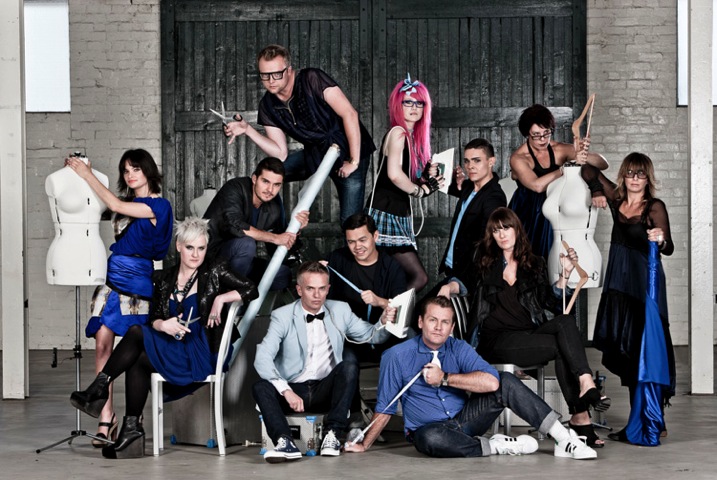
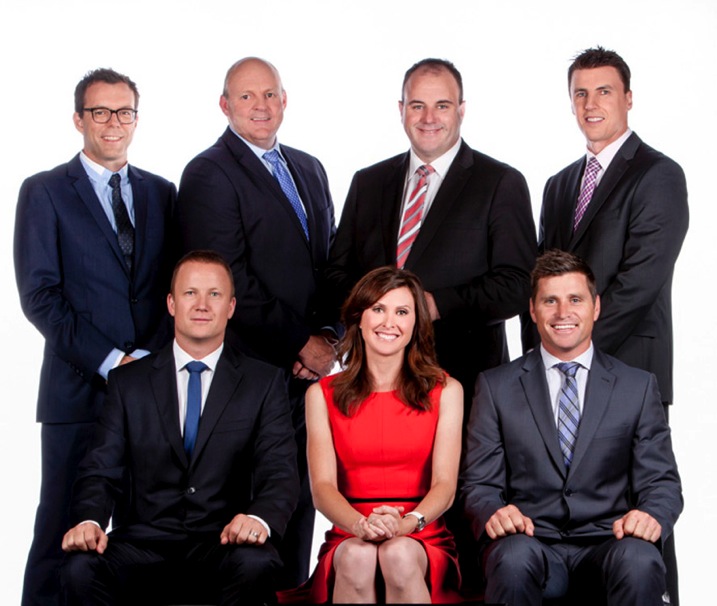
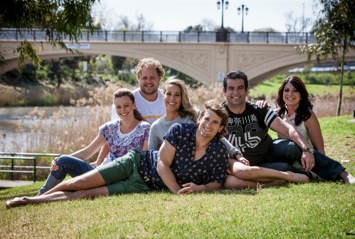
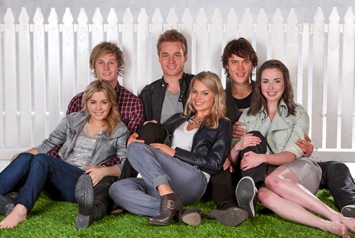
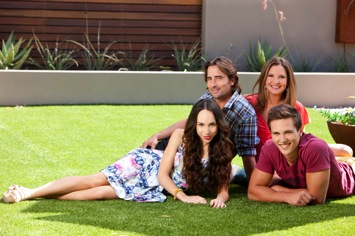
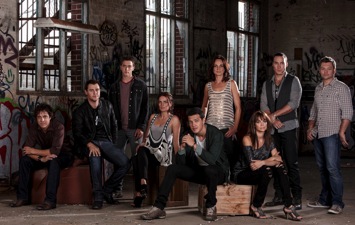
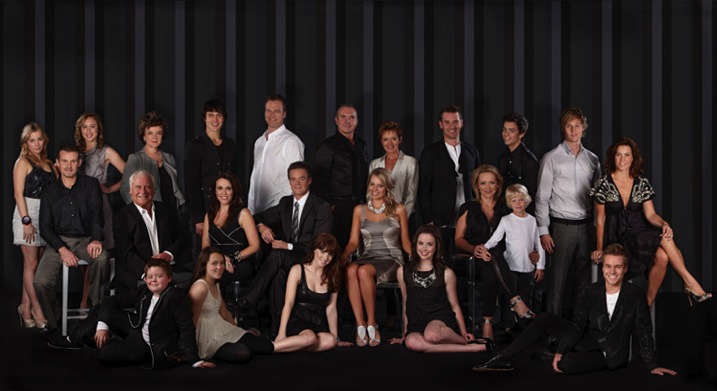

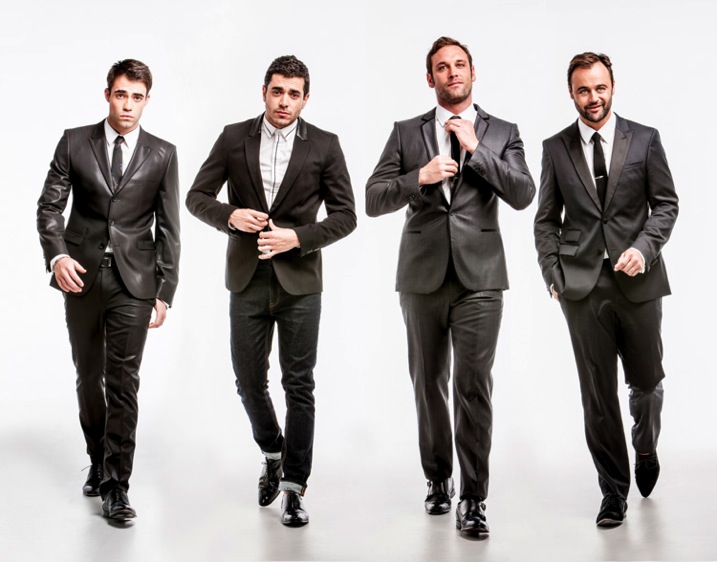
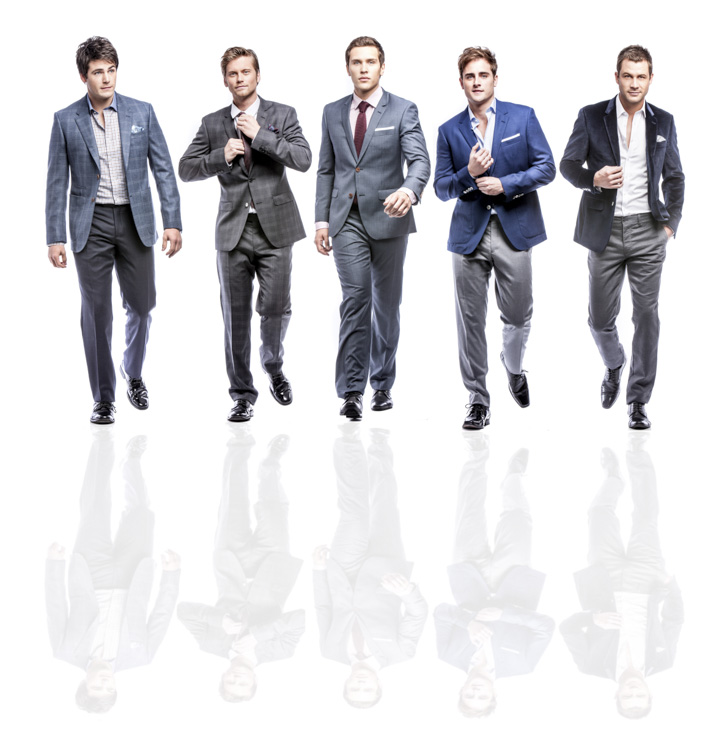

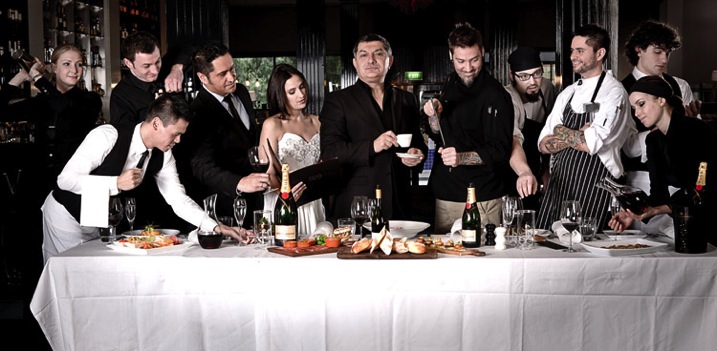





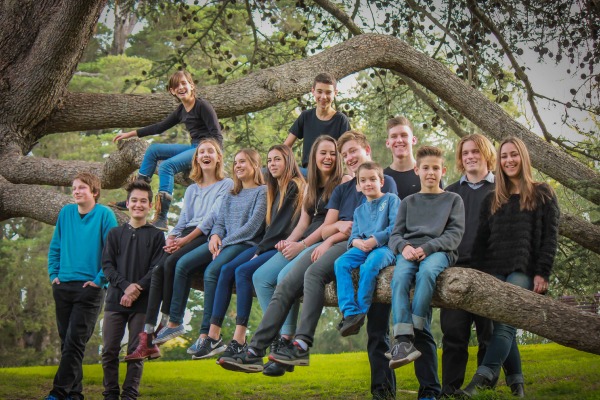


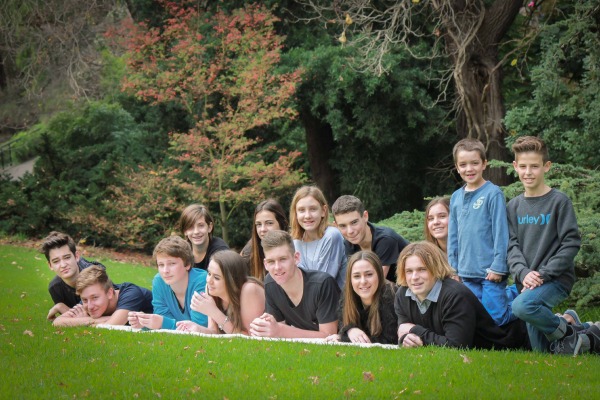
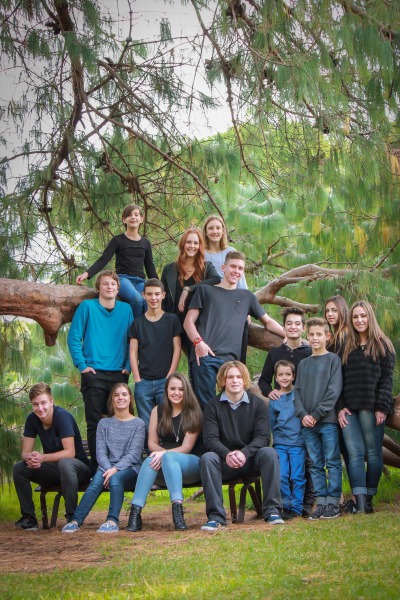
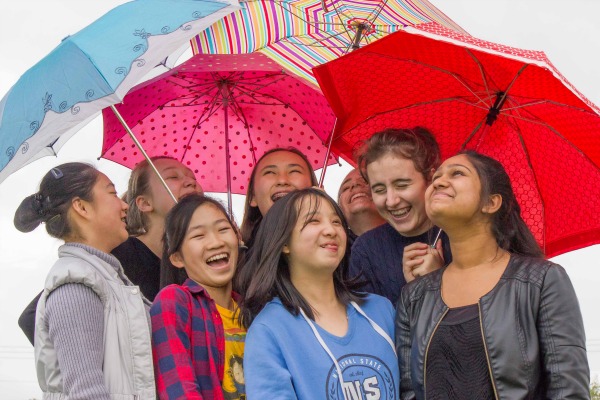
You must be logged in to post a comment.